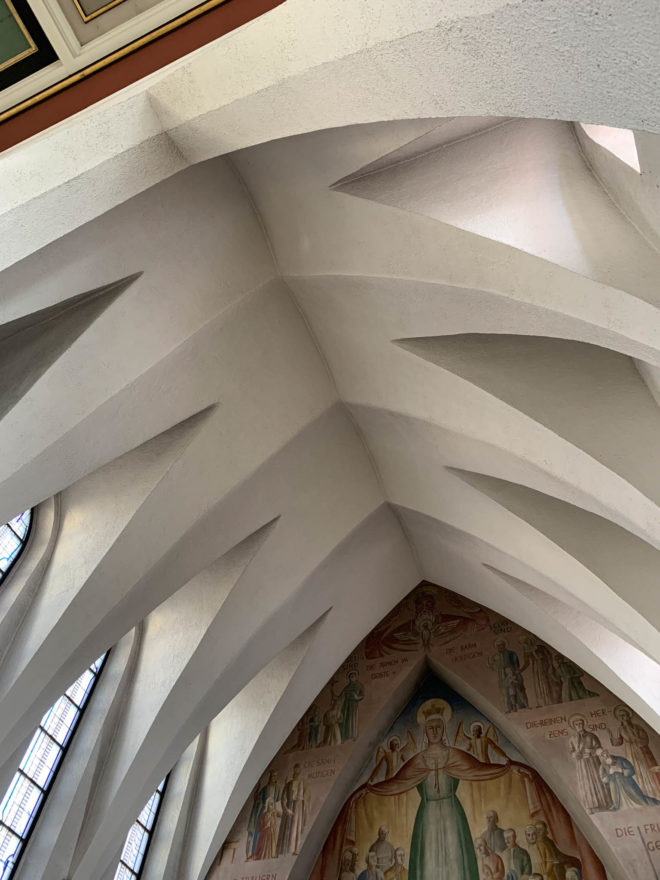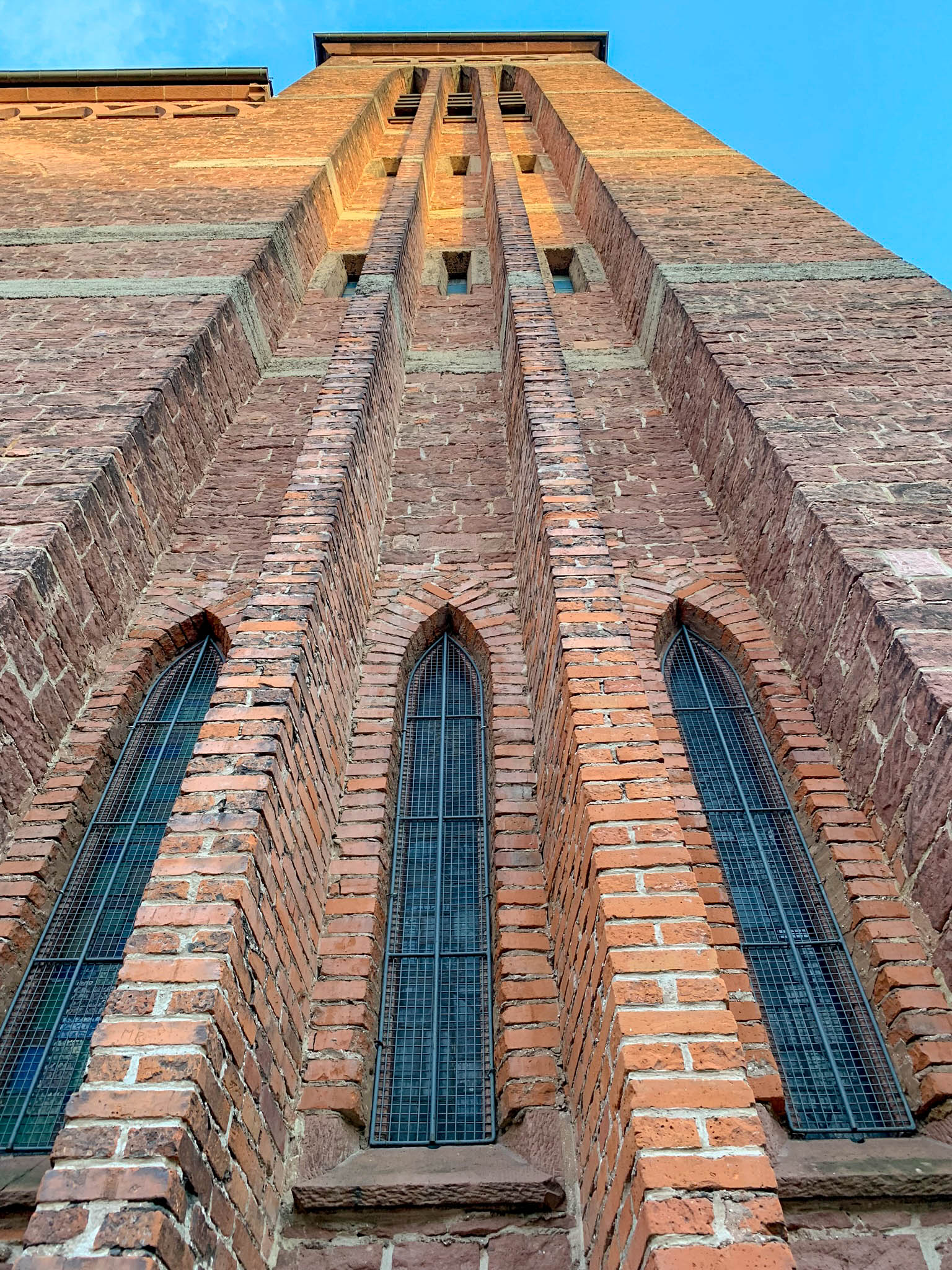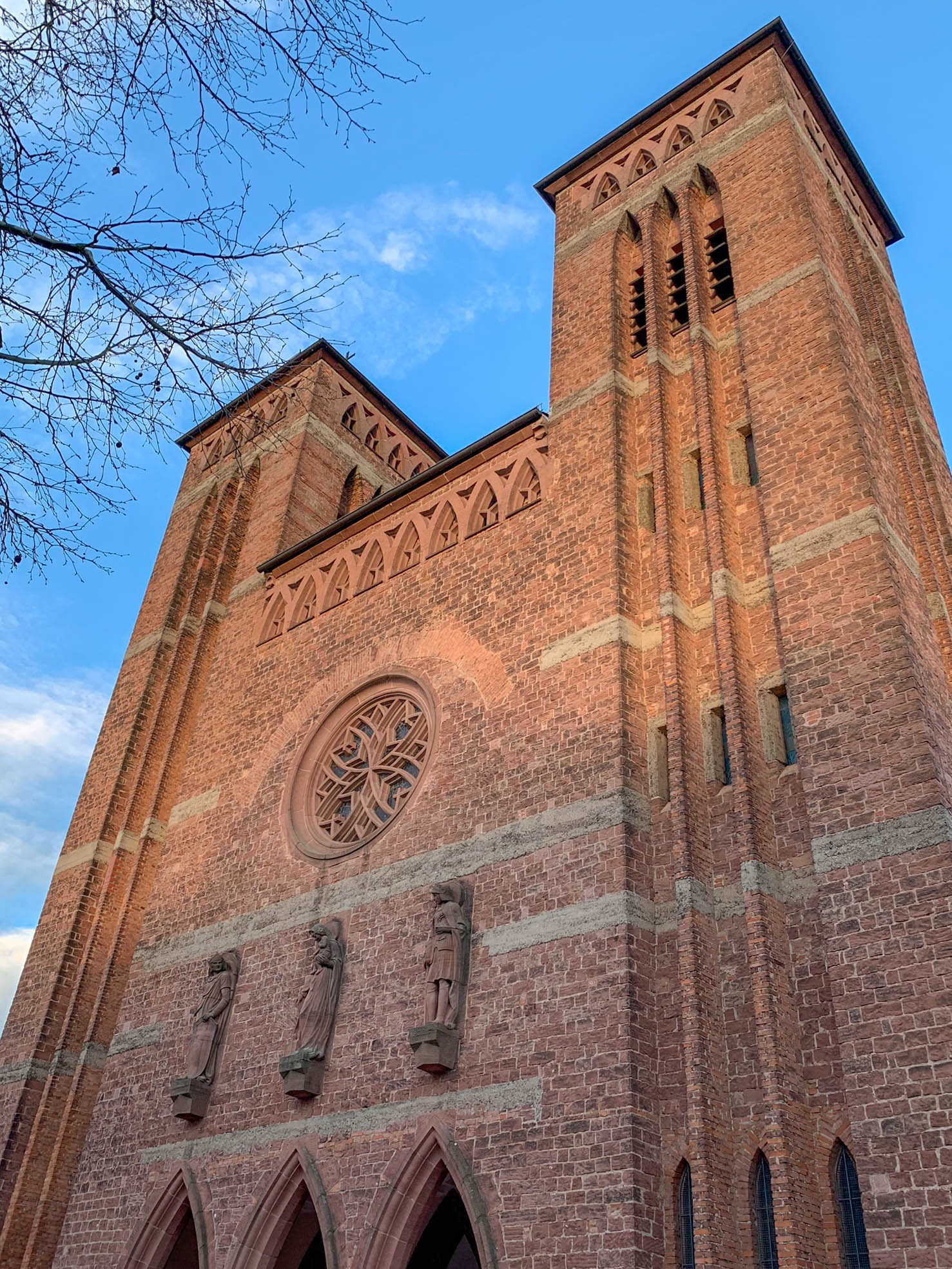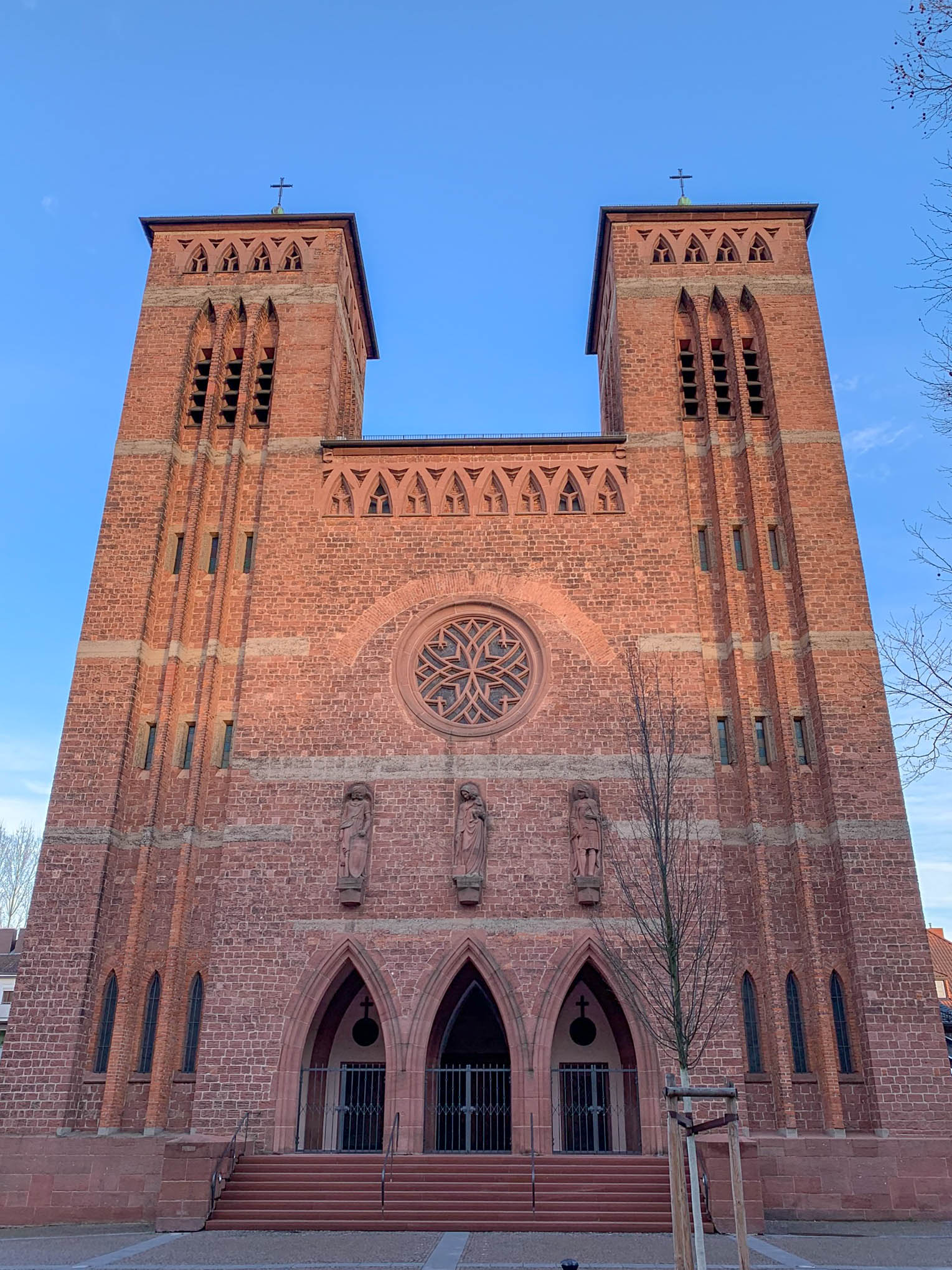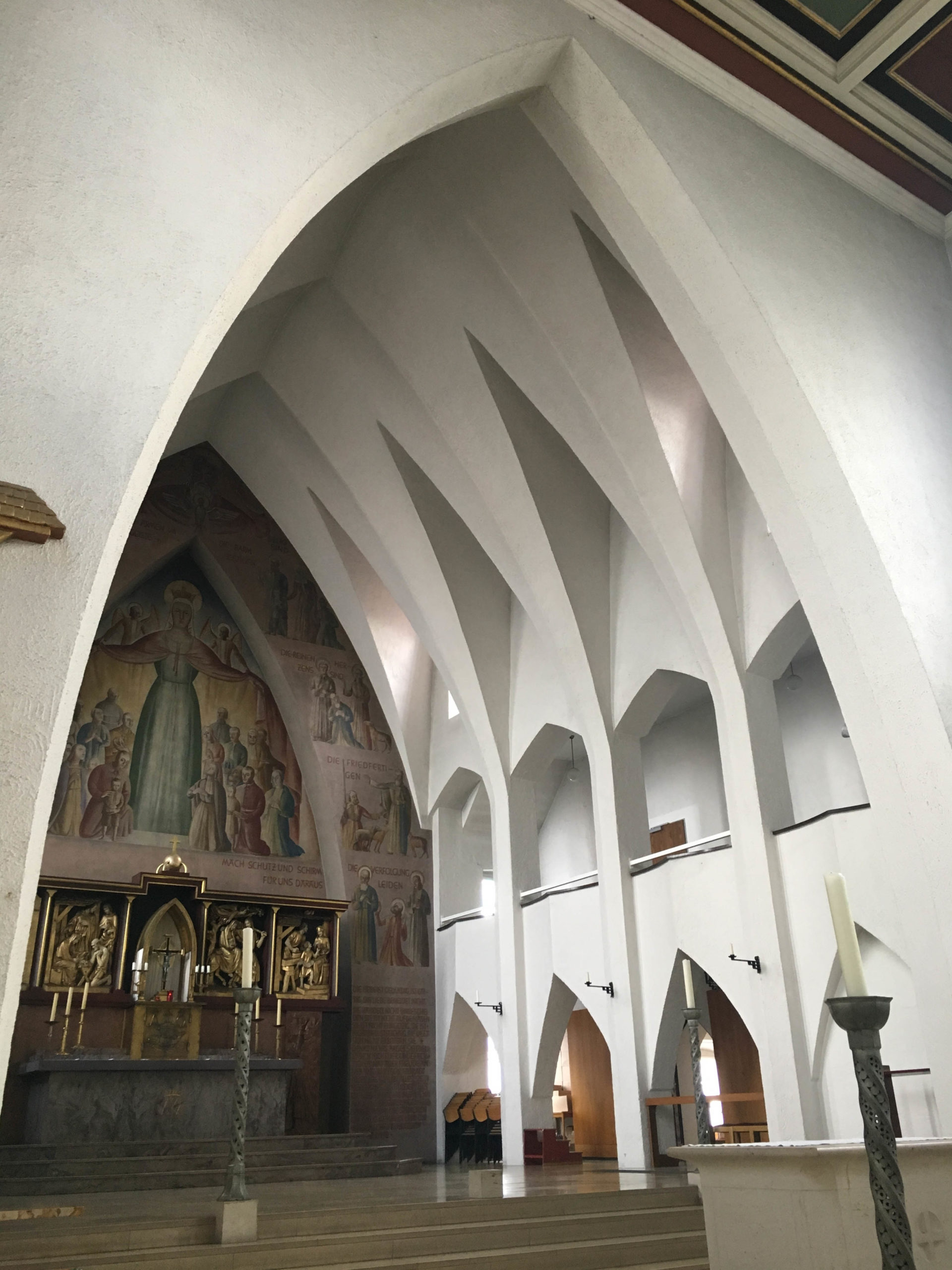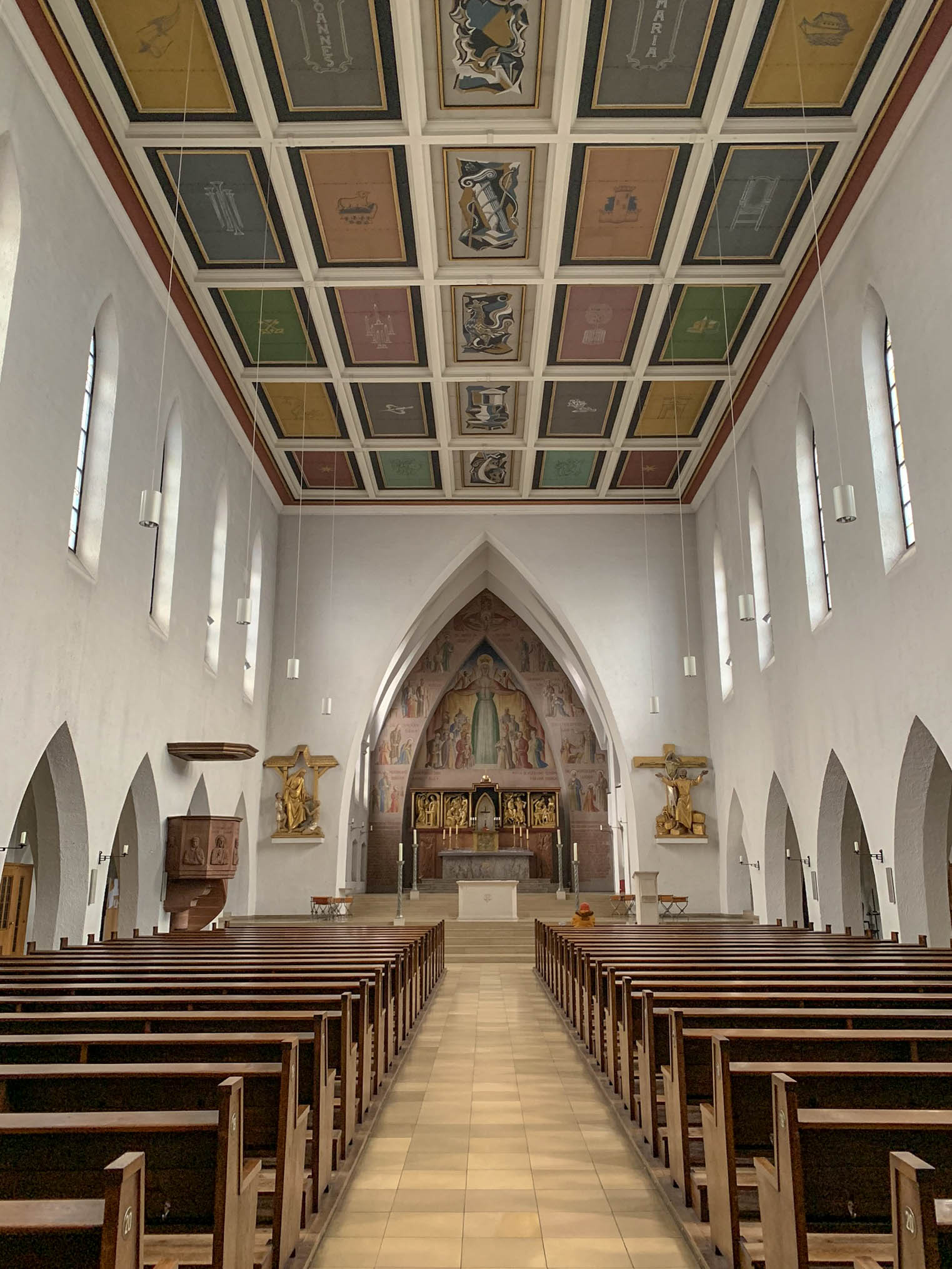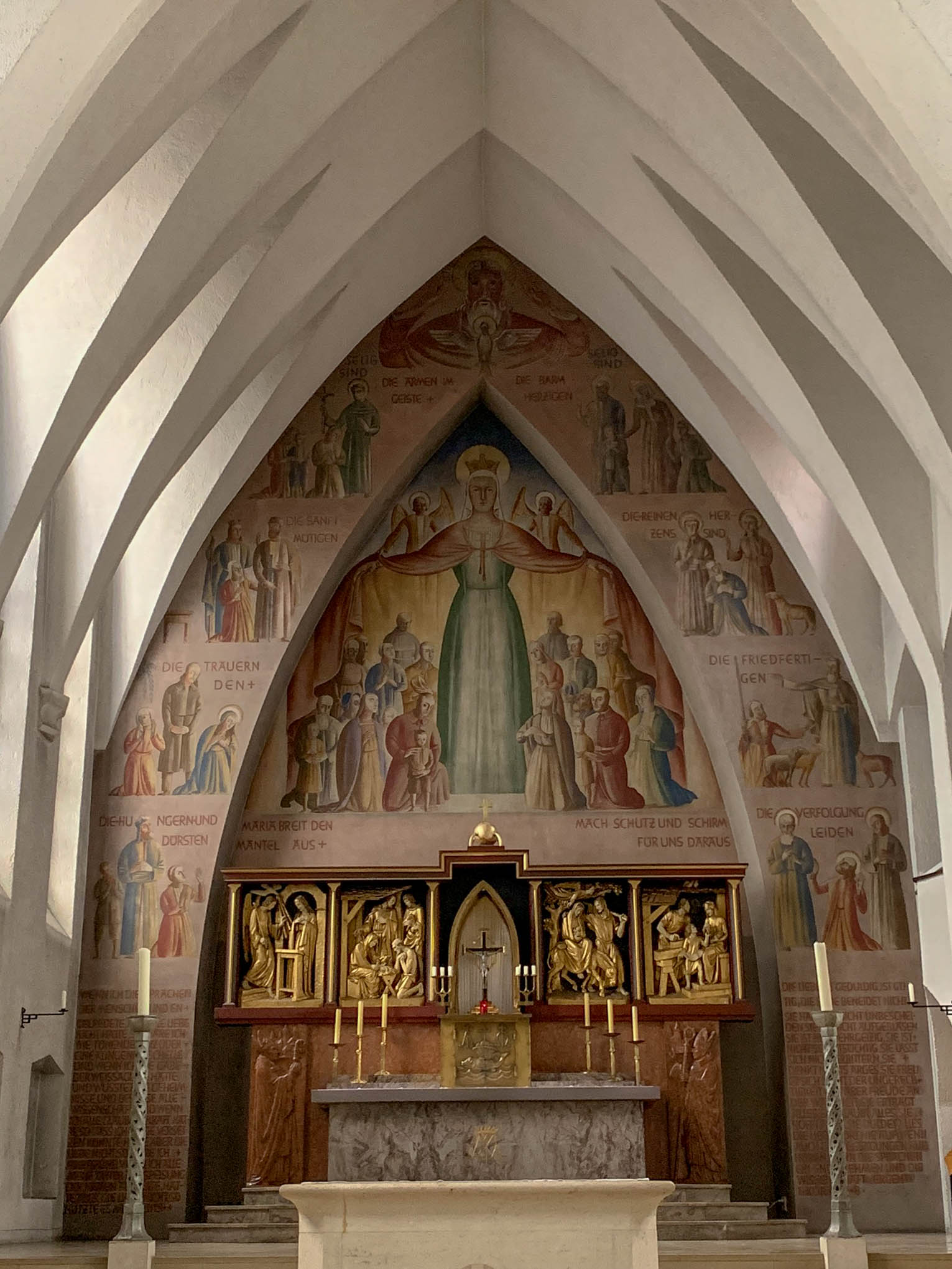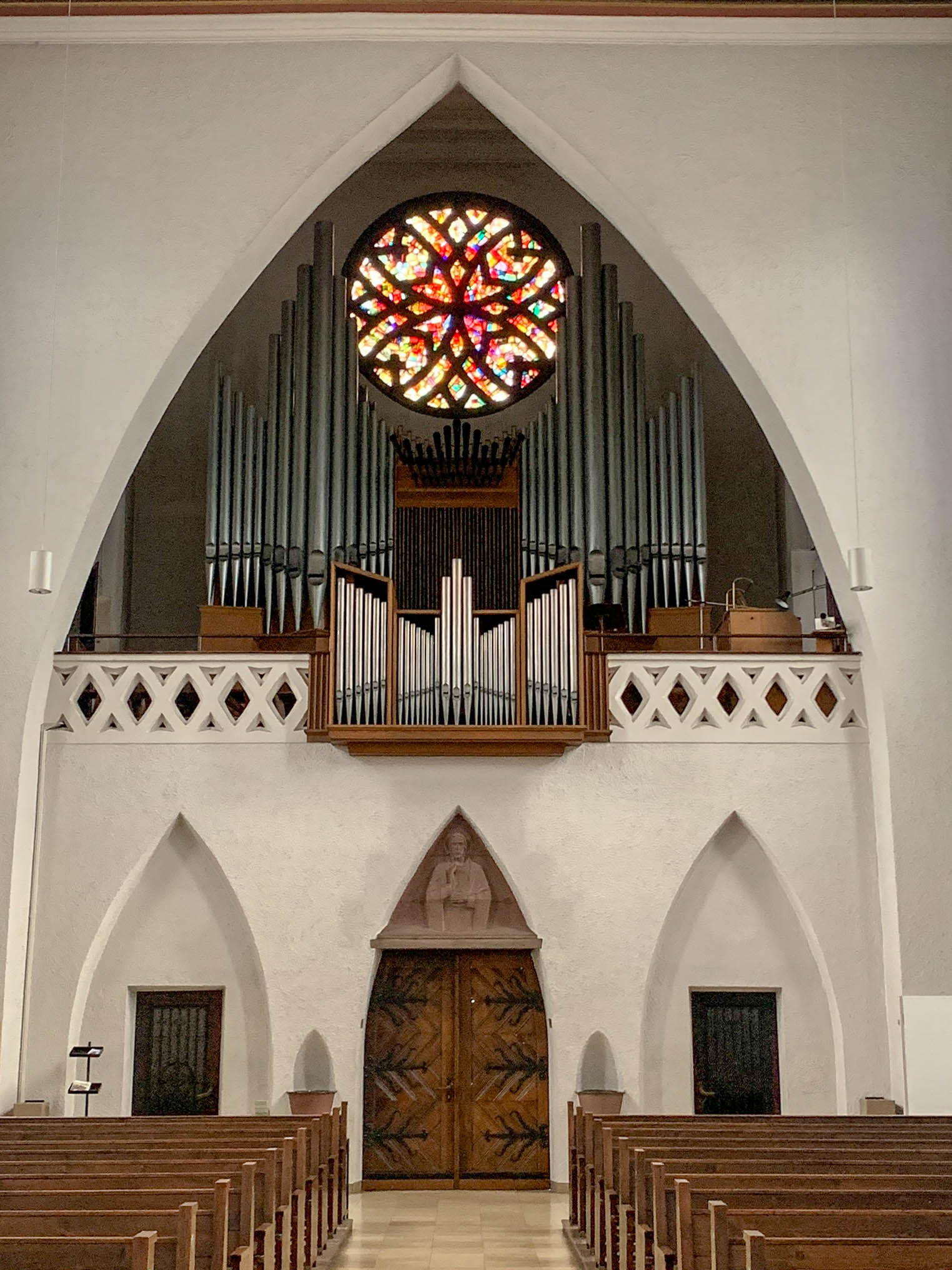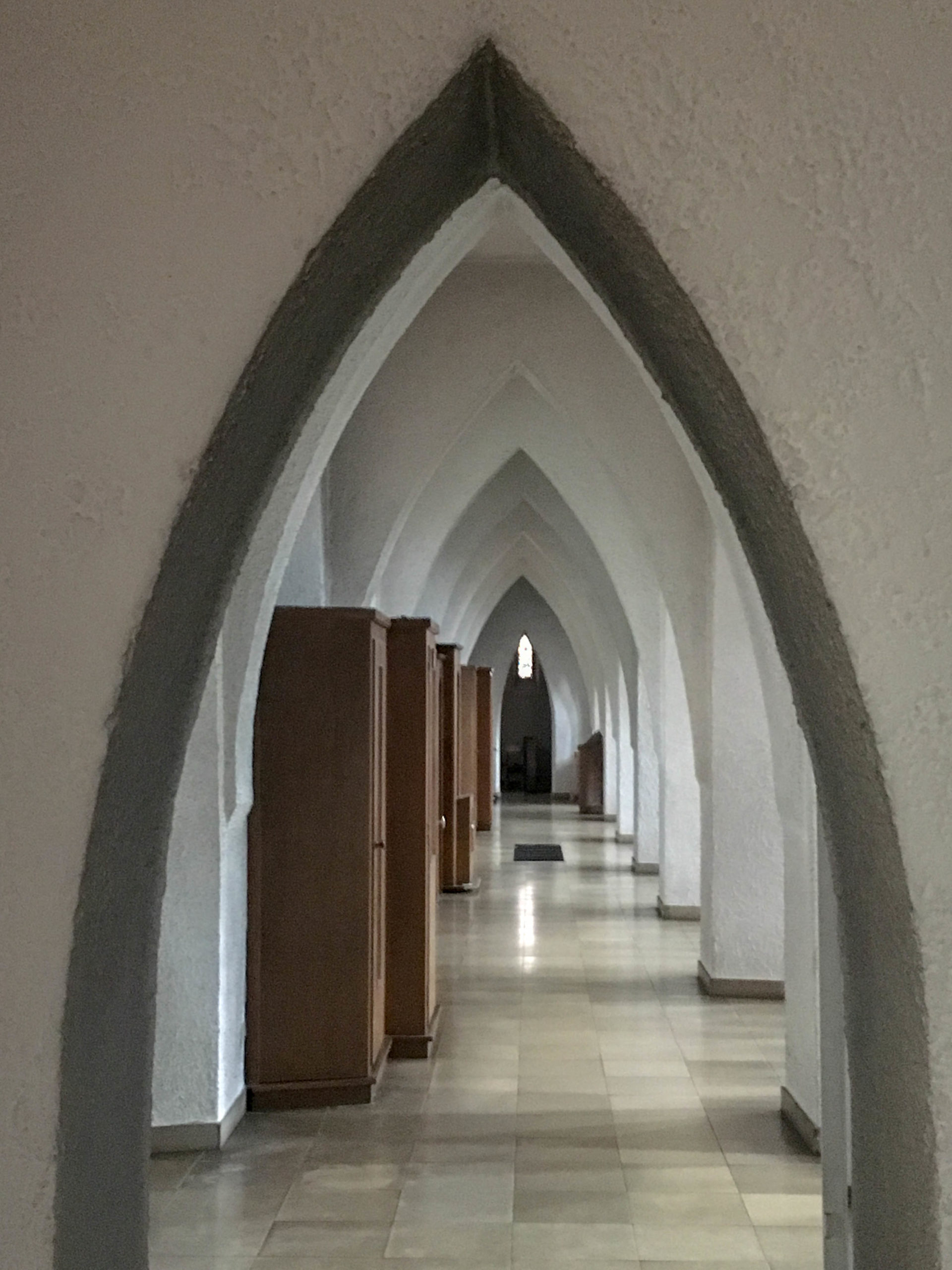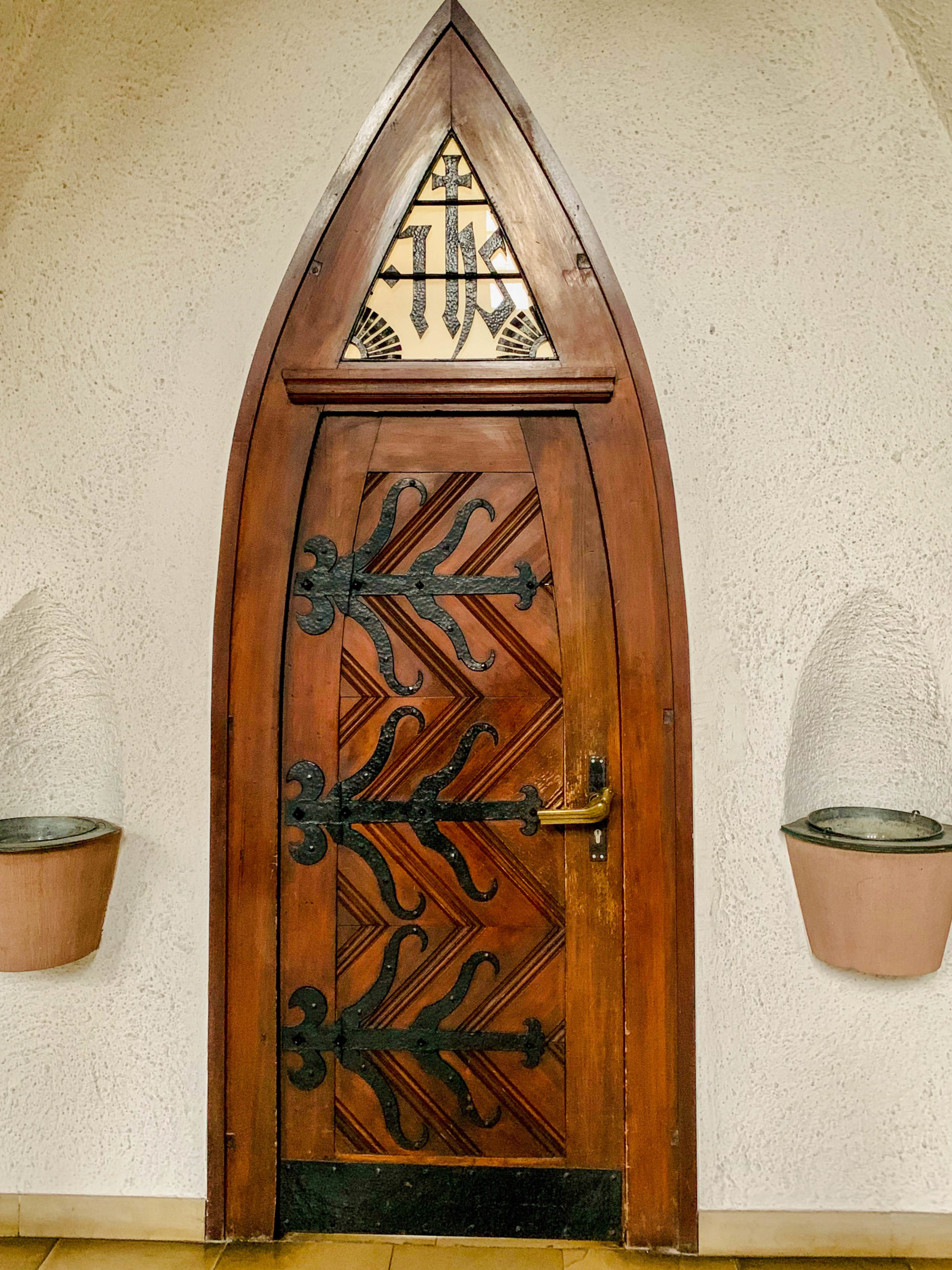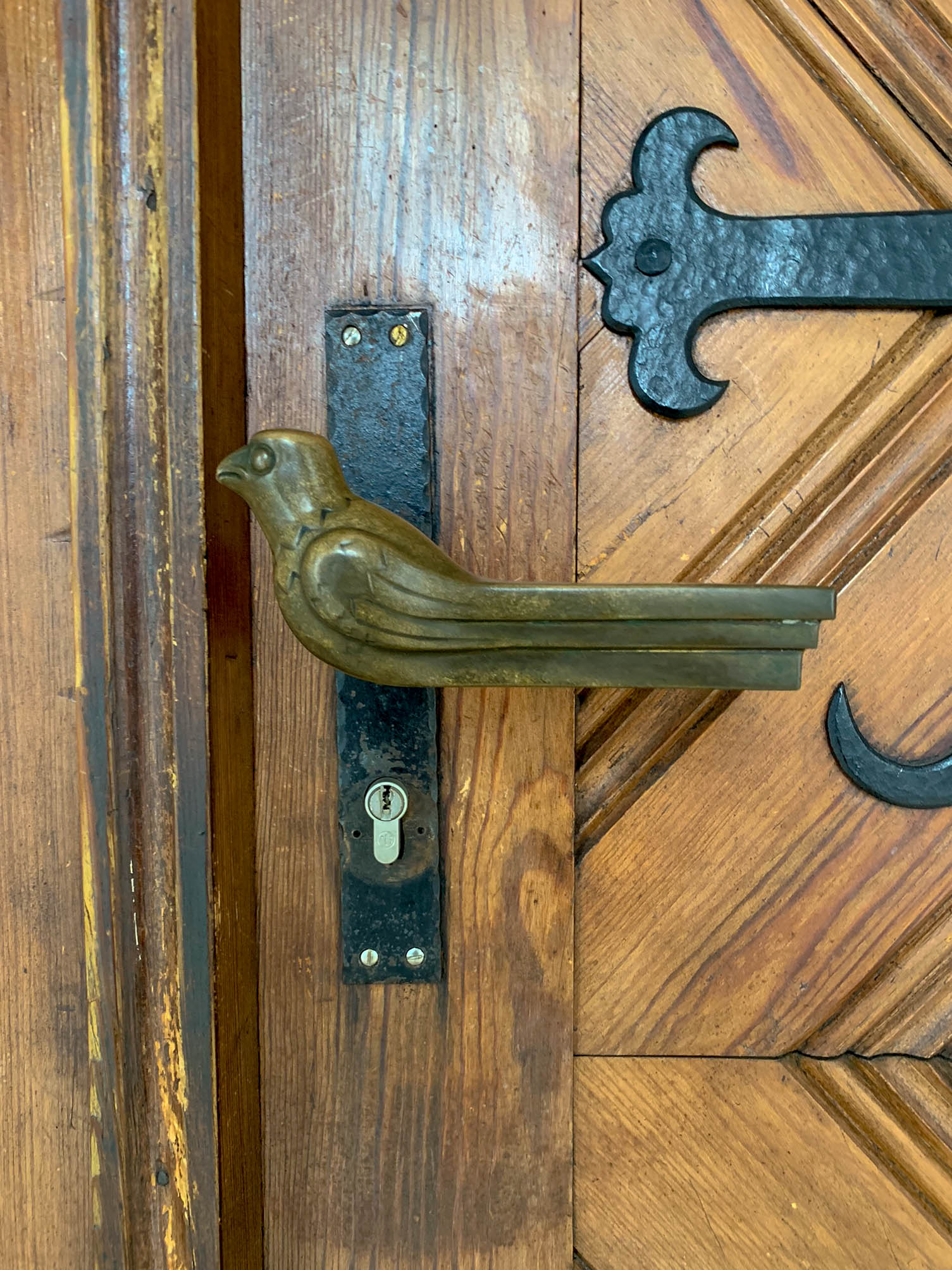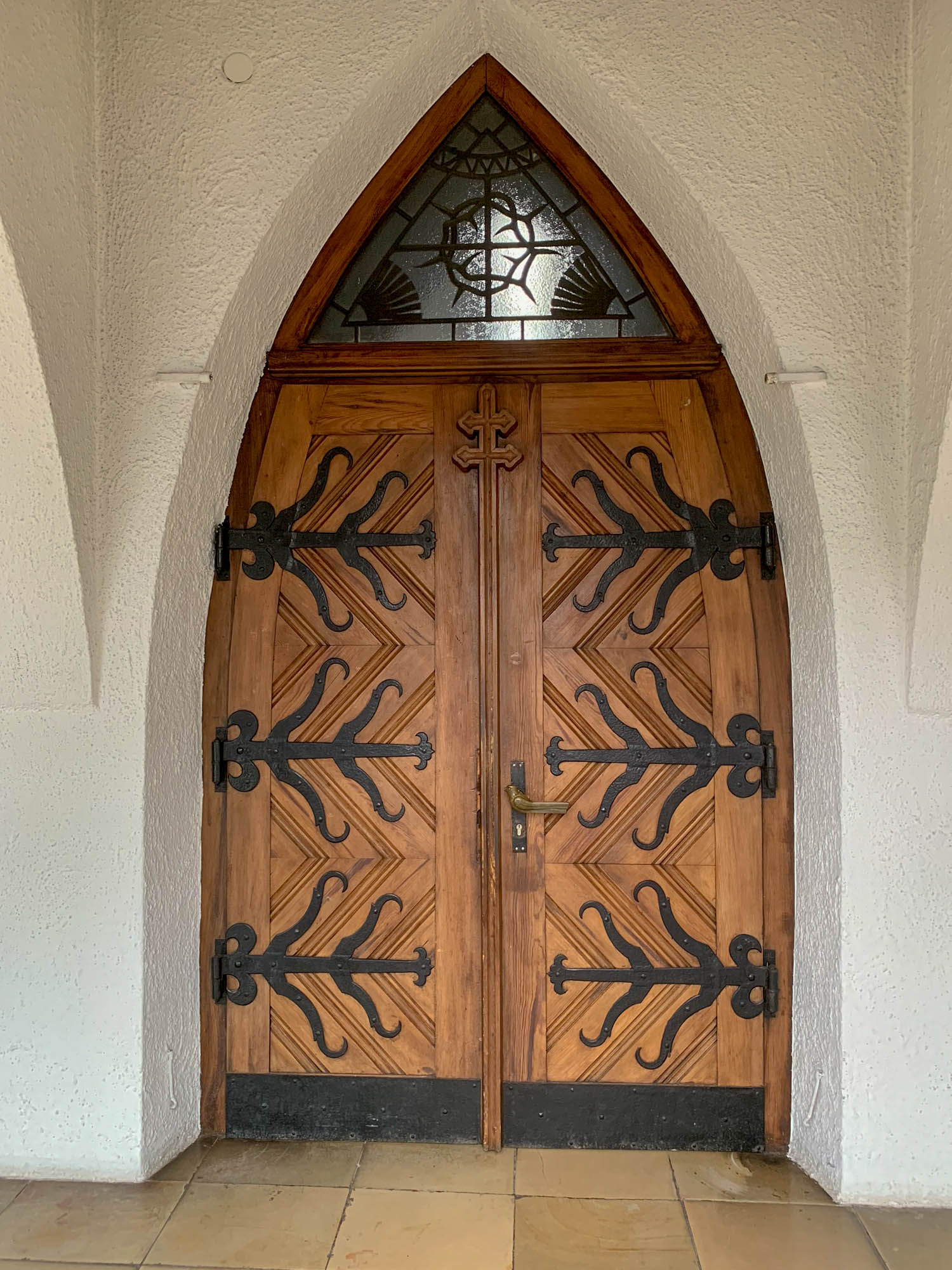1928 – 1929
Architect: Hans Seeberger
Bismarckstraße 63, Kaiserslautern, Germany
The Gelöbniskirche Maria Schutz is a Roman Catholic parish and pilgrimage church and a Minorite monastery church in Kaiserslautern.
It was built from 1928 to 1929 according to plans by architects Hans and Fritz Seeberger.
Background
The reason for the construction was a vow made by Bishop Michael Faulhaber of Speyer at the outbreak of the First World War on August 2, 1914.
He promised to build a church in honor of Maria Schutz if the Palatinate was spared severe destruction.
Faulhaber’s successor Ludwig Sebastian fulfilled the promise with the help of numerous donations from the diocese.
The church was consecrated on October 20, 1929, and the Minorites took over its care.
Prior to that, in 1926/27, the convent buildings of the Minorites had first been built on the land acquired by the Kirchenbauverein Sankt Antonius for the church and convent.
Building
The foundation stone for the church was laid on June 10, 1928. The consecration took place one year later.
The church is a three-nave basilica with double-tower facade in brick and sandstone.
Narrow slit-like blind arches divide the tower facades. Original pointed spires were destroyed during World War II and replaced with flat pyramidal roofs.
The sculptures of St. Michael the Archangel, St. Mary and St. Louis above the portal were created by sculptor Simon Höpfel.
Inside, the nave has a flat roof, and the present coffered ceiling was added after the war.
Narrow lancet windows with pointed arches light the central nave.
The apse, with its expressive pointed arches rising from the floor, frames the image of a Virgin of Mercy. Beneath Mary’s mantle, Bishops Michael von Faulhaber and Ludwig Sebastian can be seen on the right and left.
During the Second World War in 1944, the church suffered severe damage. Already in the years 1947 to 1948 the restoration began.
Columbarium
In December 2021, the church received a columbarium.
During a pontifical mass, the new urn walls were blessed and handed over to their intended purpose.
Prior to that, a six-month remodeling phase included the renovation and redesign of the worship space.
The plans for the columbarium and the redesign were drawn up by the architectural firm Bayer und Uhrig from Kaiserslautern in consultation with the parish of Maria Schutz.
The columbarium is located in each of the two flat-roofed side aisles. The total of ten chapels can accommodate 1,320 urn chambers.

